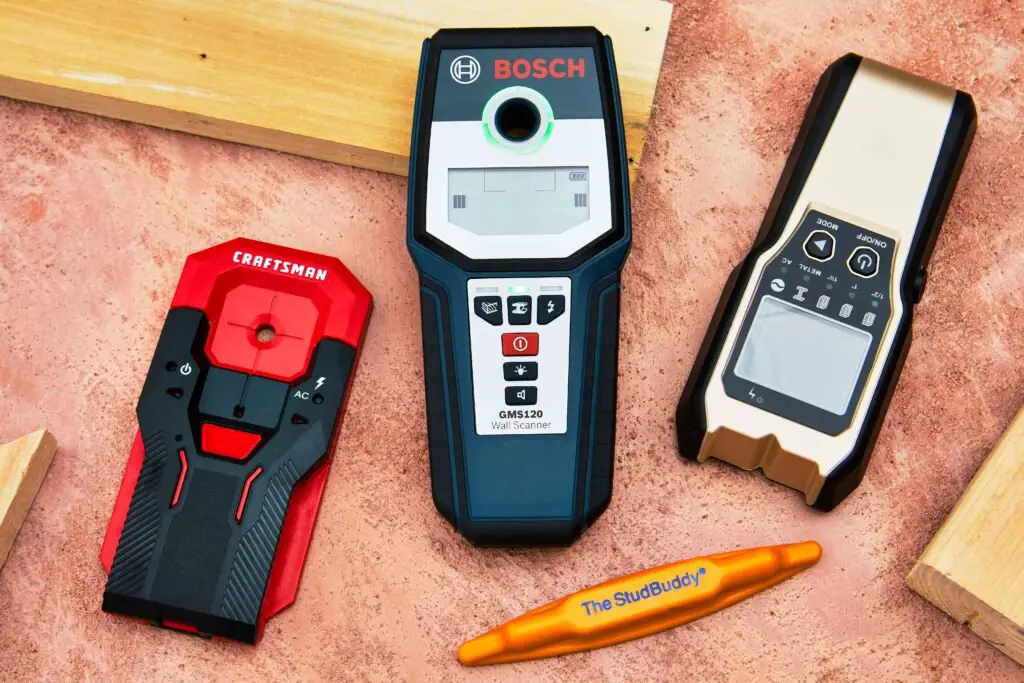When it comes to hanging heavy objects like shelves, TVs, or mirrors, finding a wall stud is crucial. A stud finder is an essential tool for any DIY enthusiast or professional contractor. But with so many options on the market, how do you choose the best stud finder for your needs? In this comprehensive guide, we’ll explore everything you need to know about stud finders, including their types, features, and how to use them effectively. By the end of this post, you’ll be equipped with the knowledge to pick the best stud finder and tackle your next project with confidence.
What is a Stud Finder and Why Do You Need the Best Stud Finder?
A stud finder is a handheld device designed to locate studs, or the vertical framing members, behind your walls. These studs are typically made of wood or metal and provide the necessary support for your walls. Hanging heavy items without anchoring them into a stud can lead to damage or even accidents.
The best stud finder ensures accuracy, saves time, and prevents unnecessary holes in your walls. Whether you’re a seasoned DIYer or a beginner, investing in a reliable stud finder is a smart move.
Types of Stud Finders: Which is the Best Stud Finder for You?
Not all stud finders are created equal. Understanding the different types can help you choose the best stud finder for your specific needs. Here are the most common types:
1. Magnetic Stud Finders
Magnetic stud finders are simple, affordable, and don’t require batteries. They work by detecting the metal screws or nails in the studs. While they are easy to use, they may not be as accurate as other types, especially in walls with minimal metal content.
2. Electronic Stud Finders
Electronic stud finders use sensors to detect changes in wall density, indicating the presence of a stud. They are more accurate than magnetic models and often come with additional features like deep scanning and AC wire detection.
3. Edge-Finding Stud Finders
These devices help you locate the edges of a stud, giving you a clear idea of its width. They are ideal for precision work and are often used by professionals.
4. Center-Finding Stud Finders
As the name suggests, these stud finders locate the center of a stud, making it easier to mark the exact spot for drilling. They are user-friendly and great for beginners.
5. Multi-Scanner Stud Finders
Multi-scanner models are the most advanced and versatile. They can detect studs, metal, and even live electrical wiring. If you’re looking for the best stud finder with all the bells and whistles, this is it.
Key Features to Look for in the Best Stud Finder
When shopping for the best stud finder, consider the following features to ensure you get the most value for your money:
1. Accuracy
The primary purpose of a stud finder is to locate studs accurately. Look for models with high precision and minimal false readings.
2. Depth Detection
If you’re working with thick walls or multiple layers of drywall, a stud finder with deep scanning capabilities is essential.
3. Ease of Use
A good stud finder should be intuitive and easy to operate, even for beginners. Features like a clear display and simple controls can make a big difference.
4. Additional Functions
Some stud finders come with extra features like AC wire detection, which can help you avoid electrical hazards while working.
5. Durability
Since a stud finder is a long-term investment, choose one made from high-quality materials that can withstand regular use.
How to Use the Best Stud Finder: A Step-by-Step Guide
Once you’ve chosen the best stud finder, it’s time to put it to work. Here’s a simple guide to using your stud finder effectively:
Step 1: Prepare Your Wall
Clear the area where you plan to work. Remove any decorations or obstacles that might interfere with the scanning process.
Step 2: Calibrate the Stud Finder
Place the stud finder flat against the wall and press the calibration button (if your model has one). This ensures accurate readings.
Step 3: Start Scanning
Slowly move the stud finder across the wall in a horizontal motion. Pay attention to the indicators (lights, sounds, or display) that signal the presence of a stud.
Step 4: Mark the Stud
Once the stud finder detects a stud, mark its edges or center using a pencil. Repeat the process to confirm the location.
Step 5: Double-Check
For added accuracy, scan the area again to ensure the stud finder’s readings are consistent.
Top 5 Best Stud Finders in 2023
To help you make an informed decision, here’s a list of the best stud finders available this year:
1. Franklin Sensors ProSensor T6
Known for its accuracy and ease of use, the Franklin Sensors ProSensor T6 is a top choice for both professionals and DIYers.
2. Zircon StudSensor e50
This electronic stud finder offers deep scanning capabilities and a user-friendly interface, making it a reliable option for most projects.
3. CH Hanson Magnetic Stud Finder
If you prefer a no-frills, battery-free option, the CH Hanson Magnetic Stud Finder is a great pick.
4. Bosch GMS120
The Bosch GMS120 is a multi-scanner that detects studs, metal, and live wires, making it a versatile tool for any job.
5. Stanley STHT77340
With its center-finding feature and affordable price, the Stanley STHT77340 is perfect for beginners.
Tips for Getting the Most Out of Your Stud Finder
To ensure you’re using the best stud finder to its full potential, keep these tips in mind:
- Always calibrate your stud finder before use.
- Move the device slowly and steadily for accurate readings.
- Avoid scanning near electrical outlets or switches, as they can interfere with the results.
- If you’re unsure about a reading, double-check by scanning the area again.
Common Mistakes to Avoid When Using a Stud Finder
Even with the best stud finder, mistakes can happen. Here are some common pitfalls to avoid:
1. Skipping Calibration
Failing to calibrate your stud finder can lead to inaccurate readings. Always follow the manufacturer’s instructions for calibration.
2. Moving Too Quickly
Moving the stud finder too fast can cause it to miss studs or give false readings. Slow and steady wins the race!
3. Ignoring Wall Composition
Different wall materials (drywall, plaster, etc.) can affect how your stud finder works. Make sure your device is suitable for the type of wall you’re working on.
4. Not Double-Checking
Always verify your findings by scanning the area multiple times. This ensures you’ve located the stud correctly.

How to Maintain Your Stud Finder for Longevity
To keep your best stud finder in top condition, follow these maintenance tips:
- Store it in a dry, cool place to prevent damage from moisture or extreme temperatures.
- Clean the sensors regularly to ensure accurate readings.
- Replace batteries as needed to maintain optimal performance.
- Avoid dropping or mishandling the device, as this can affect its functionality.
Why the Best Stud Finder is a Must-Have Tool
Finding wall studs doesn’t have to be a guessing game. With the best stud finder in your toolkit, you can tackle any project with confidence and precision. Whether you’re hanging a picture frame or installing a new TV, a reliable stud finder ensures your work is safe, secure, and professional-looking.
Investing in the best stud finder is a small step that can make a big difference in your DIY projects. So, take the time to choose the right one for your needs, and enjoy the peace of mind that comes with knowing your work is done right.
Frequently Asked Questions About Stud Finders
1. Can a stud finder detect metal studs?
Yes, most modern stud finders can detect both wood and metal studs. However, it’s important to check the specifications of your device to ensure it has this capability.
2. How deep can a stud finder scan?
The scanning depth varies by model. Some stud finders can detect studs up to 1.5 inches deep, while others can scan up to 3 inches or more.
3. Can I use a stud finder on plaster walls?
Yes, but plaster walls can be more challenging due to their density. Look for a stud finder with deep scanning capabilities for best results.
4. Do stud finders work on ceilings?
Some stud finders can be used on ceilings, but it may require additional effort and caution. Always check the manufacturer’s guidelines.
By following this guide, you’ll not only find the best stud finder but also learn how to use it effectively.
